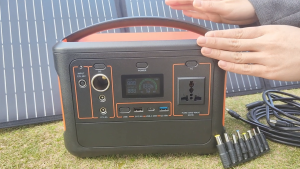More
Building Power: The Precision of Component Manufacturing for Portable Battery Power Stations
Building Power: The Precision of Component Manufacturing for Portable Battery Power Stations
Introduction:
Portable power stations are the result of a meticulous and precise production process. One of the pivotal stages in this journey is component manufacturing. This is where the essential elements that form the heart of these powerhouses are sourced, crafted, and quality-tested. In this blog post, we’ll delve into the intricacies of component manufacturing for portable power stations, uncovering the dedication and precision that go into creating these reliable sources of energy.
Component Manufacturing: The Heart of the Process
-
Sourcing from Reliable Suppliers:
The production process begins with the strategic sourcing of essential components. Manufacturers partner with reliable suppliers who specialize in providing key elements such as engines, alternators, fuel tanks, control panels, batteries, and various electrical and mechanical parts. The selection of trustworthy suppliers is crucial, as it ensures the quality and reliability of these critical components.
-
Quality Control Procedures:
Once the components are sourced, they undergo rigorous quality control procedures. Manufacturers are committed to delivering products that meet or exceed industry standards. This involves meticulous inspections, testing, and certification to ensure that each component is of the highest quality.

-
Engine Excellence:
Engines are the powerhouse of portable power stations. These engines are sourced from reputable manufacturers known for their reliability and performance. They are subjected to stringent quality checks to ensure they meet the specified power output and efficiency requirements.
-
Robust Alternators:
Alternators are at the core of power generation. Manufacturers ensure that these components are not only durable but also capable of producing a consistent and stable electrical output. Stringent testing procedures verify their performance under various load conditions.

-
Fuel Tanks and Efficiency:
Efficiency in fuel usage is paramount for portable power stations. Fuel tanks are designed to store fuel safely and efficiently. Manufacturers carefully select materials that are resistant to corrosion and ensure proper sealing to prevent leaks.
-
Control Panels for User Convenience:
The control panel is the user’s interface with the generator. It’s designed with user-friendliness in mind, featuring clear labeling and intuitive controls. Engineers ensure that the control panel integrates seamlessly with the generator’s components.

-
Battery Reliability:
Batteries are a critical component for storing power. Manufacturers choose high-quality batteries capable of withstanding repeated charge and discharge cycles. Battery management systems are often integrated to optimize battery performance and extend lifespan.
Conclusion: Precision in Production
Component manufacturing is the beating heart of the production process for portable power stations. It’s where reliability, efficiency, and quality are forged into every unit. Manufacturers leave no stone unturned, partnering with reputable suppliers and subjecting components to stringent quality control to ensure that every portable power station that leaves the assembly line is ready to be a steadfast source of energy, whether for outdoor adventures or during times of need.














